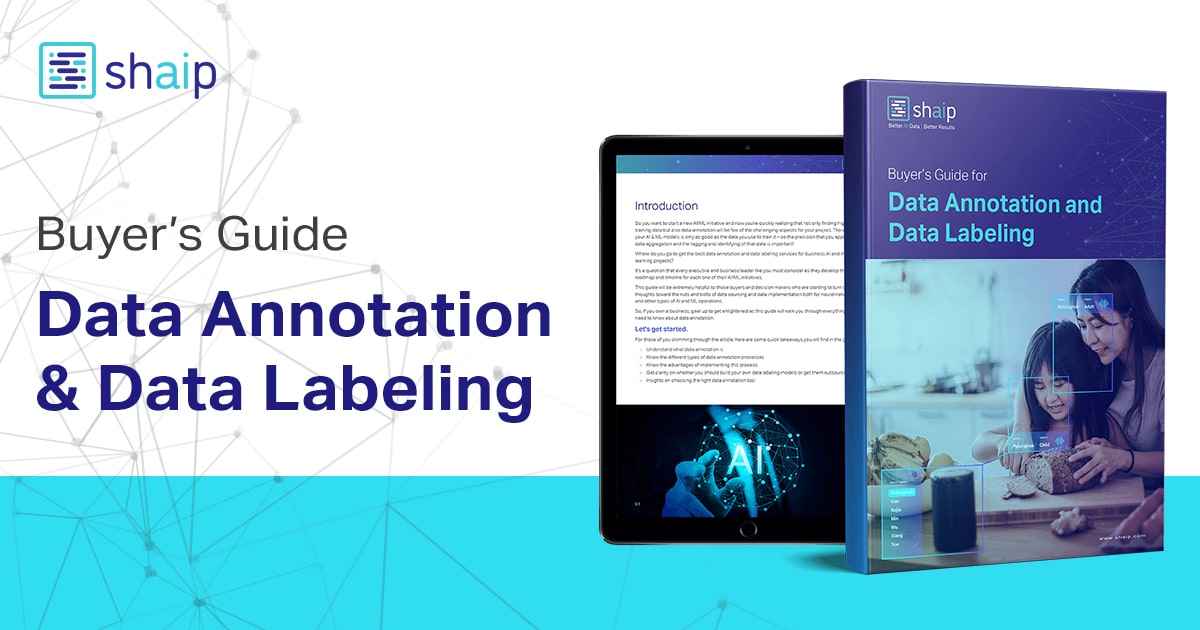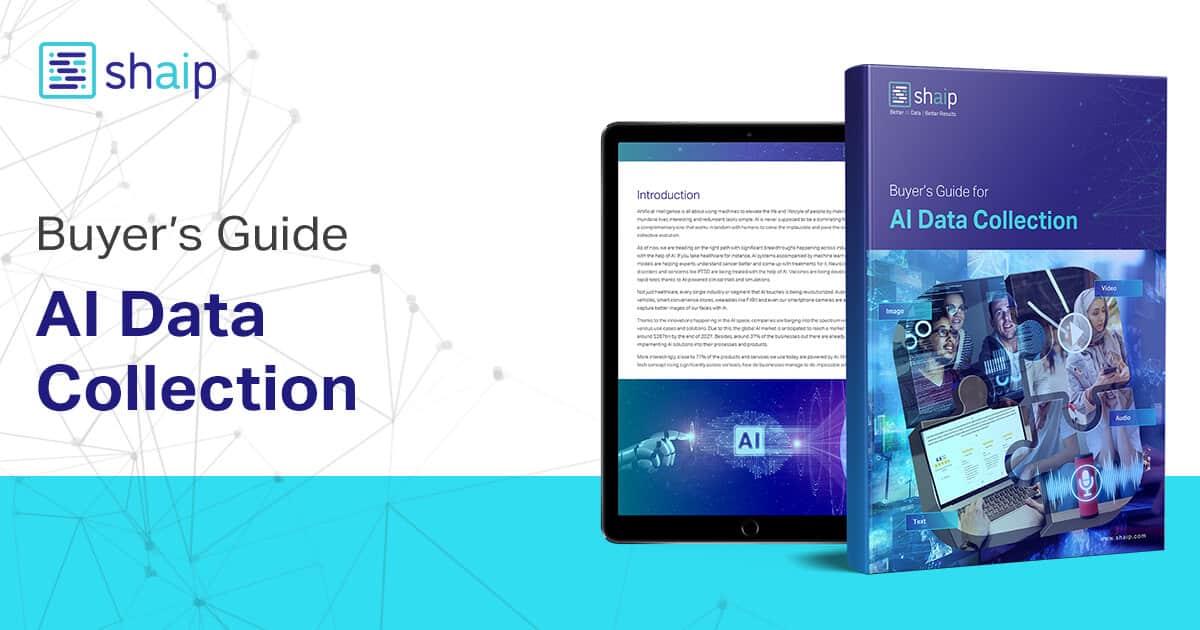The “Bad Data” Problem—Sharper in 2025
Your AI roadmap might look great on slides—until it collides with reality. Most derailments trace back to data: mislabeled samples, skewed distributions, stale records, missing metadata, weak lineage, or brittle evaluation sets. With LLMs going from pilot to production and regulators raising the bar, data integrity and observability are now board-level topics rather than engineering footnotes.
Shaip covered this years ago, warning that “bad data” sabotages AI ambitions.
This 2025 refresh takes that core idea forward with practical, measurable steps you can implement right now.
What “Bad Data” Looks Like in Real AI Work
“Bad data” isn’t just dirty CSVs. In production AI, it shows up as:

- Label noise & low IAA: Annotators disagree; instructions are vague; edge cases are unaddressed.
- Class imbalance & poor coverage: Common cases dominate while rare, high-risk scenarios are missing.
- Stale or drifting data: Real-world patterns shift, but datasets and prompts don’t.
- Skew & leakage: Training distributions don’t match production; features leak target signals.
- Missing metadata & ontologies: Inconsistent taxonomies, undocumented versions, and weak lineage.
- Weak QA gates: No gold sets, consensus checks, or systematic audits.
These are well-documented failure modes across the industry—and fixable with better instructions, gold standards, targeted sampling, and QA loops.
How Bad Data Breaks AI (and Budgets)
Bad data reduces accuracy and robustness, triggers hallucinations and drift, and inflates MLOps toil (retraining cycles, relabeling, pipeline debugging). It also shows up in business metrics: downtime, rework, compliance exposure, and eroded customer trust. Treat this as data incidents—not just model incidents—and you’ll see why observability and integrity matter.
- Model performance: Garbage in still yields garbage out—especially for data-hungry deep learning and LLM systems that amplify upstream defects.
- Operational drag: Alert fatigue, unclear ownership, and missing lineage make incident response slow and expensive. Observability practices reduce mean-time-to-detect and repair.
- Risk & compliance: Biases and inaccuracies can cascade into flawed recommendations and penalties. Data integrity controls reduce exposure.
A Practical 4-Stage Framework (with Readiness Checklist)
Use a data-centric operating model composed of Prevention, Detection & Observability, Correction & Curation, and Governance & Risk. Below are the essentials for each stage.
1. Prevention (Design data right before it breaks)
- Tighten task definitions: Write specific, example-rich instructions; enumerate edge cases and “near misses.”
- Gold standards & calibration: Build a small, high-fidelity gold set. Calibrate annotators to it; target IAA thresholds per class.
- Targeted sampling: Over-sample rare but high-impact cases; stratify by geography, device, user segment, and harms.
- Version everything: Datasets, prompts, ontologies, and instructions all get versions and changelogs.
- Privacy & consent: Bake consent/purpose limitations into collection and storage plans.
2. Detection & Observability (Know when data goes wrong)
- Data SLAs and SLOs: Define acceptable freshness, null rates, drift thresholds, and expected volumes.
- Automated checks: Schema tests, distribution drift detection, label-consistency rules, and referential-integrity monitors.
- Incident workflows: Routing, severity classification, playbooks, and post-incident reviews for data issues (not only model issues).
- Lineage & impact analysis: Trace which models, dashboards, and decisions consumed the corrupted slice.
Data observability practices—long standard in analytics—are now essential for AI pipelines, reducing data downtime and restoring trust.
3. Correction & Curation (Fix systematically)
- Relabeling with guardrails: Use adjudication layers, consensus scoring, and expert reviewers for ambiguous classes.
- Active learning & error mining: Prioritize samples the model finds uncertain or gets wrong in production.
- De-dup & denoise: Remove near-duplicates and outliers; reconcile taxonomy conflicts.
- Hard-negative mining & augmentation: Stress-test weak spots; add counterexamples to improve generalization.
These data-centric loops often outperform pure algorithmic tweaks for real-world gains.
4. Governance & Risk (Sustain it)
- Policies & approvals: Document ontology changes, retention rules, and access controls; require approvals for high-risk shifts.
- Bias and safety audits: Evaluate across protected attributes and harm categories; maintain audit trails.
- Lifecycle controls: Consent management, PII handling, subject-access workflows, and breach playbooks.
- Executive visibility: Quarterly reviews on data incidents, IAA trends, and model quality KPIs.
Treat data integrity as a first-class QA domain for AI to avoid the hidden costs that accumulate silently.
Readiness Checklist (fast self-assessment)

- Clear instructions with examples? Gold set built? IAA target set per class?
- Stratified sampling plan for rare/regulated cases?
- Dataset/prompt/ontology versioning and lineage?
- Automated checks for drift, nulls, schema, and label consistency?
- Defined data incident SLAs, owners, and playbooks?
- Bias/safety audit cadence and documentation?
Example Scenario: From Noisy Labels to Measurable Wins
Context: An enterprise support-chat assistant is hallucinating and missing edge intents (refund fraud, accessibility requests). Annotation guidelines are vague; IAA is ~0.52 on minority intents.
Intervention (6 weeks):
- Rewrite instructions with positive/negative examples and decision trees; add 150-item gold set; retrain annotators to ≥0.75 IAA.
- Active—learn 20k uncertain production snippets; adjudicate with experts.
- Add drift monitors (intent distribution, language mix).
- Expand evaluation with hard negatives (tricky refund chains, adversarial phrasing).
Results:
- F1 +8.4 points overall; minority-intent recall +15.9 points.
- Hallucination-related tickets −32%; MTTR for data incidents −40% thanks to observability and runbooks.
- Compliance flags −25% after adding consent and PII checks.
Quick Health Checks: 10 Signs Your Training Data Isn’t Ready
- Duplicate/near-duplicate items inflating confidence.
- Label noise (low IAA) on key classes.
- Severe class imbalance without compensating evaluation slices.
- Missing edge cases and adversarial examples.
- Dataset drift vs. production traffic.
- Biased sampling (geography, device, language).
- Feature leakage or prompt contamination.
- Incomplete/unstable ontology and instructions.
- Weak lineage/versioning across datasets/prompts.
- Fragile evaluation: no gold set, no hard negatives.
Where Shaip Fits (Quietly)
When you need scale and fidelity:
- Sourcing at scale: Multi-domain, multilingual, consented data collection.
- Expert annotation: Domain SMEs, multilayer QA, adjudication workflows, IAA monitoring.
- Bias & safety audits: Structured reviews with documented remediations.
- Secure pipelines: Compliance-aware handling of sensitive data; traceable lineage/versioning.
If you’re modernizing the original Shaip guidance for 2025, this is how it evolves—from cautionary advice to a measurable, governed operating model.
Conclusion
AI outcomes are determined less by state-of-the-art architectures than by the state of your data. In 2025, the organizations winning with AI are the ones that prevent, detect, and correct data issues—and prove it with governance. If you’re ready to make that shift, let’s stress-test your training data and QA pipeline together.







